FF7 Rebirth Queen’s Blood: Best tips to make QB battles easy

Queen’s Blood is the brand new in-game card battler introduced in Final Fantasy 7 Rebirth, and it’s surprisingly good. Bashing through all 30 of the Queen’s Blood combatants is great fun, and there’s a surprisingly deep storyline lurking just below the surface.
In this guide we’re breaking down the Queen’s Blood tips you need to know. How the game works, and the best strategies to adapt, aren’t obvious at first, but we’re breaking down the essentials so you can clear through the game with ease.
FF7 Rebirth: How to travel between regions, Chocobo Carriage, Dock, and Airstrip locations
Owning lanes
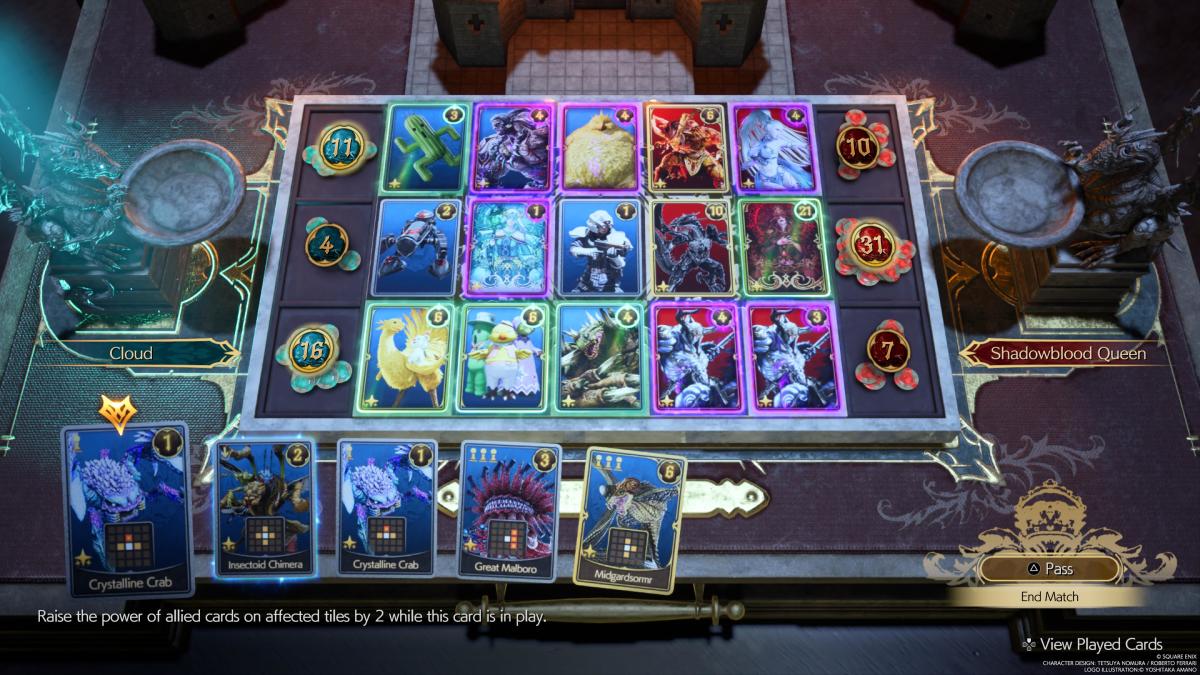
The main goal of Queen’s Blood is to own the lanes. There are three lanes in total, and the player with the highest score in that lane owns the lane, and takes the points, whereas the other players takes zero points for that lane. If players have an equal score on a lane, nobody takes the points for that lane. Obviously if you can own two lanes you’ll have an advantage, but with a strong strategy you can win games with an overwhelming score on a single lane.
Take space
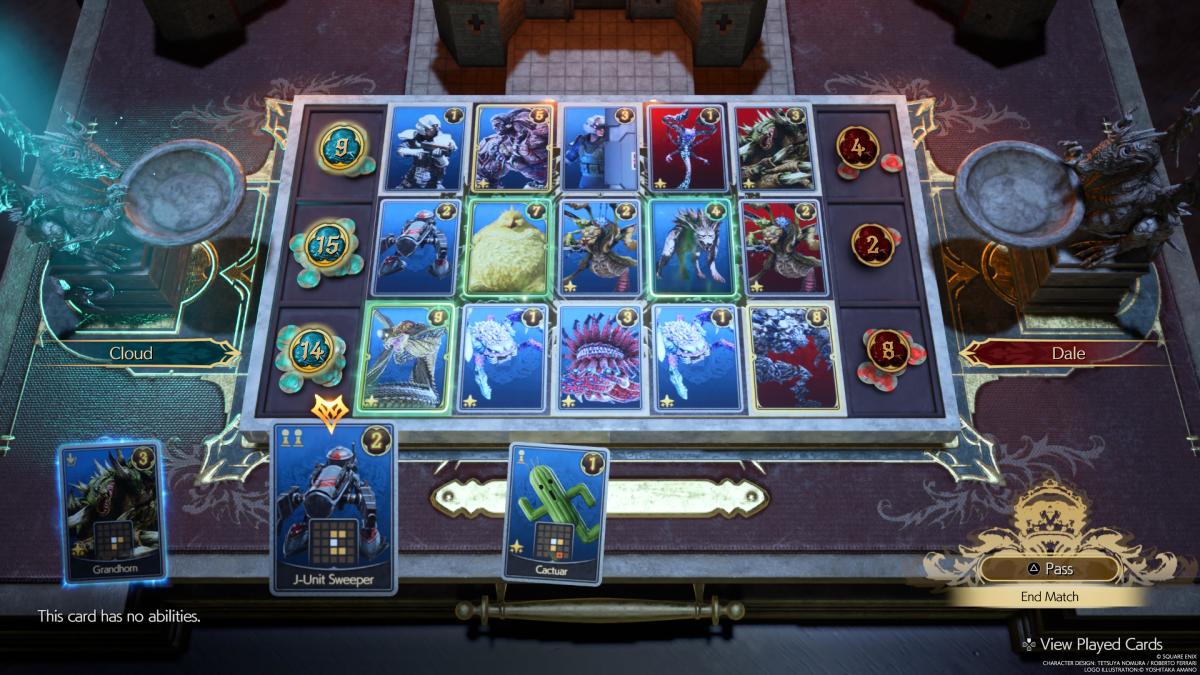
Owning a lane is easier when you take up a lot of space. Each of your cards will affect the spaces around them, and you’ll be able to see how by looking at the grid on the card. A majority of the cards you’ll get early on simply take up space, and so empty spaces affected by the card will add a pawn, or if an opponent’s pawn was already on that space, it’ll simply make it your pawn instead. A single pawn can be sacrificed for a rank 1 card, but spaces can be powered up three times for a total of three pawns, allowing you to summon rank 3 cards. So filling up your backline isn’t as important as progressing forward, placing pawns as close to your opponent as possible, and filling those spaces with your cards. As a result, as a general tip, we wouldn’t use cards that place pawns behind your card, as it’ll make advancing difficult.
Power vs advancing
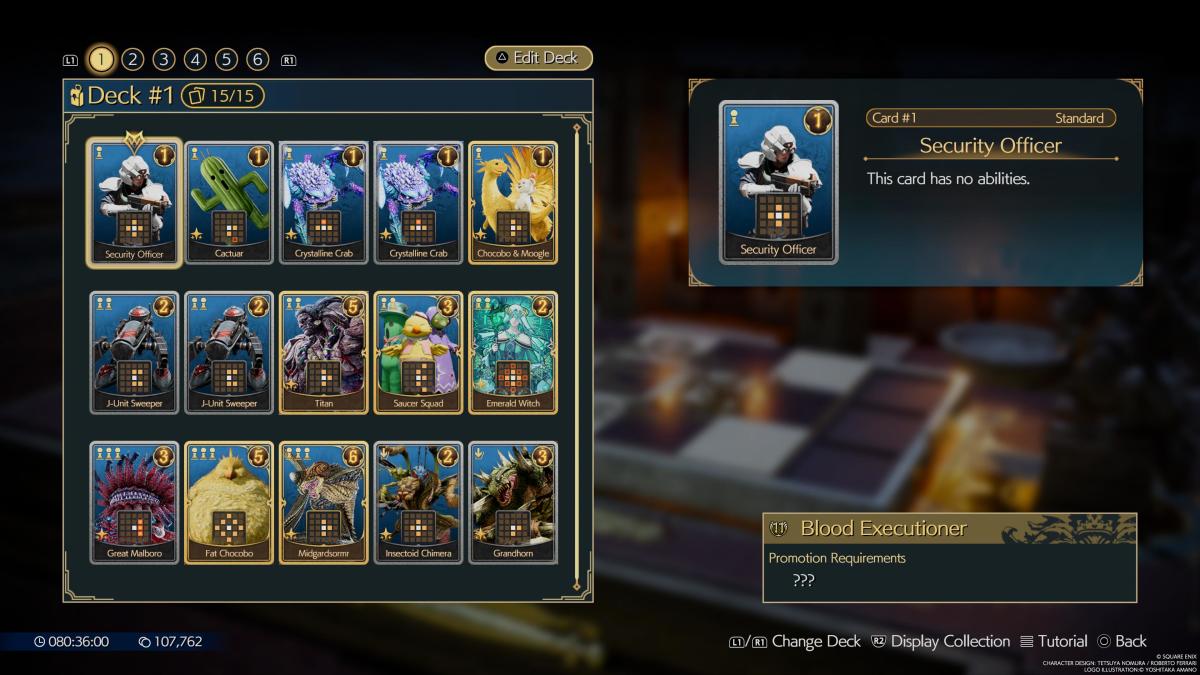
Each card has a number for its power, in addition to its rank. For example, the basic Security Officer card has a power and rank of only one, meaning it doesn’t add much, but it does advance in all four cardinal directions, making it useful for taking enemy pawns and spaces. Fleetwing seems better on the face of it, being a rank one card with a power of three, but it can only advance backwards, making it less useful in most situations. You need to balance both the overall power of your cards with the usability in a variety of situations.
Buffs and debuffs
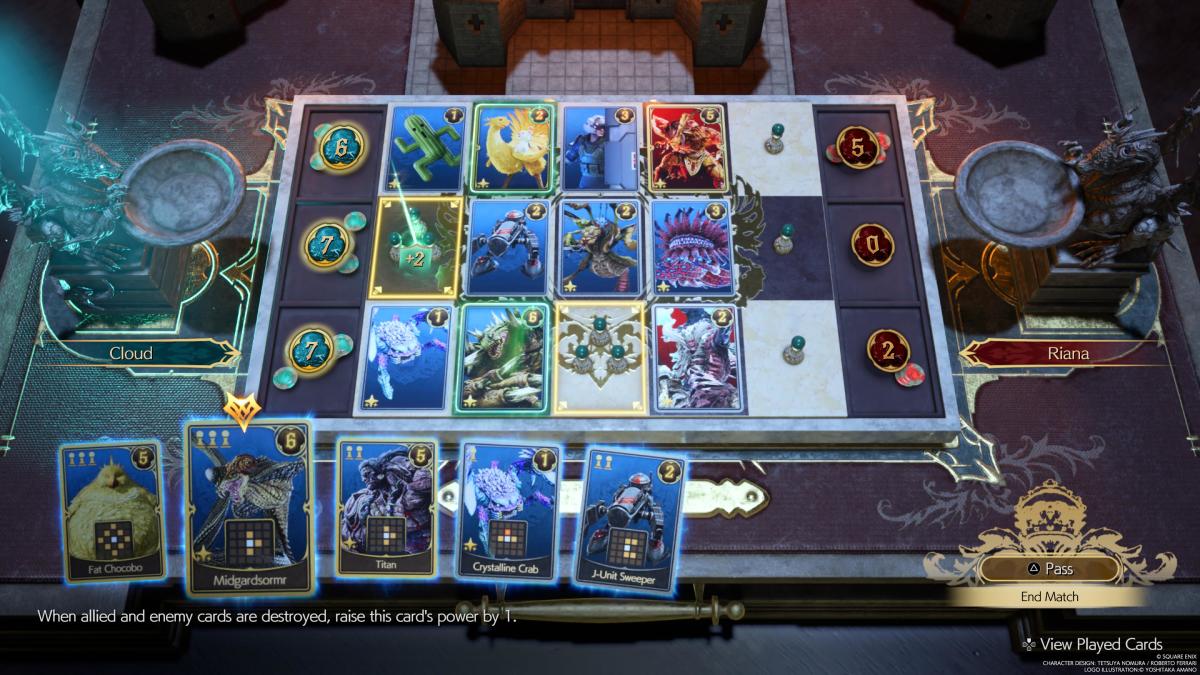
Once you’ve got the basics nailed down, it’s time to think about buffs and debuffs. Cards like the Crystalline Crab can buff cards nearby, and the Chocobo & Moogle card gets an extra power buff every time an ally does. You can stack effects like this in order to get overwhelming power in all lanes. You can also enfeeble enemy cards or outright destroy them if their power reaches zero, and monster cards like Midgardsormr can power up when that happens too.
Offensive cards

Enfeebling enemy cards is one way to win, but destroying them entirely is even better. For example, The Great Marlboro enfeebles cards in the column in front of it by six, and if the power of those cards are six or lower, then they’ll be destroyed, which can then power up Midgardsormr, in addition to opening up those spaces for your own cards.
Replacements
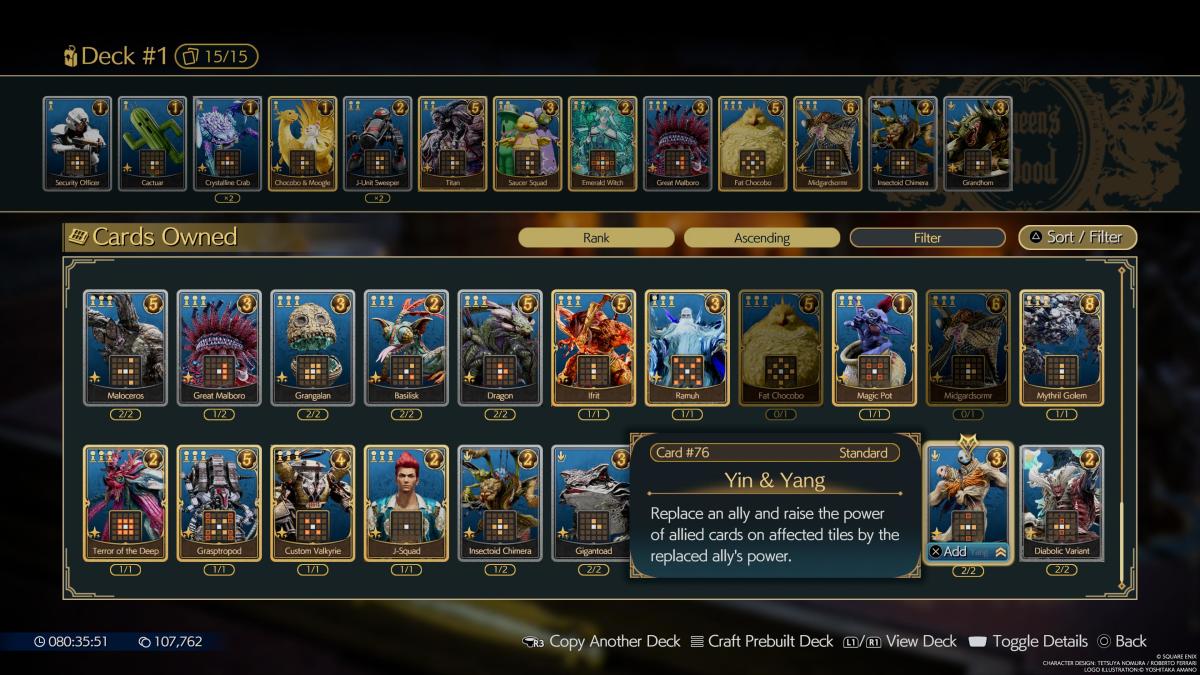
The last thing you need to know about Queen’s Blood cards are the replacements. There are a handful of cards that can only be used by sacrificing another one of your cards. These are actually useful, as you can replace a low-power (but useful) card like the aforementioned Security Officer after it’s fulfilled its role with a card like Grandhorn, which has three power – which just might be enough to win you a game. Later cards, like Yin & Yang or Griffon, can even buff or debuff enemies and allies alike depending on the card they replace.
